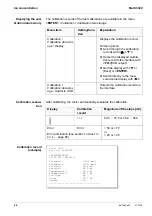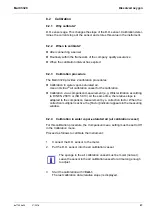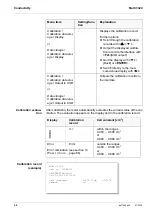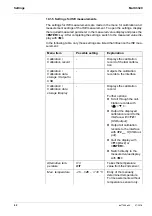
Multi 3320
Dissolved oxygen
ba77053e04
07/2018
47
8.2
Calibration
8.2.1
Why calibrate?
D.O. sensors age. This changes the slope of the D.O. sensor. Calibration deter-
mines the current slope of the sensor and stores this value in the instrument.
8.2.2
When to calibrate?
After connecting a sensor
Routinely within the framework of the company quality assurance
When the calibration interval has expired
8.2.3
Calibration procedure
The Multi 3320 provides 2 calibration procedures:
Calibration in water vapor-saturated air.
Use an OxiCal
®
air calibration vessel for the calibration.
Calibration via a comparison measurement (e.g. Winkler titration according
to DIN EN 25813 or ISO 5813). At the same time, the relative slope is
adapted to the comparison measurement by a correction factor. When the
correction multiplier is active, the
[Factor]
indicator appears in the measuring
window.
8.2.4
Calibration in water vapor-saturated air (air calibration vessel)
For this calibration procedure, the
Comparison meas.
setting must be set to
Off
in the
Calibration
menu.
Proceed as follows to calibrate the instrument:
1.
Connect the D.O. sensor to the meter.
2.
Put the D.O. sensor into the air calibration vessel.
The sponge in the air calibration vessel must be moist (not wet).
Leave the sensor in the air calibration vessel for a time long enough
to adjust.
3.
Start the calibration with
<CAL>
.
The last calibration data (relative slope) is displayed.
















































